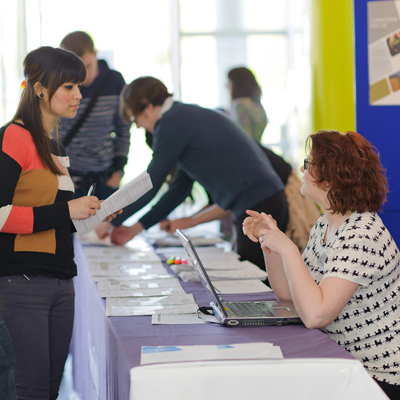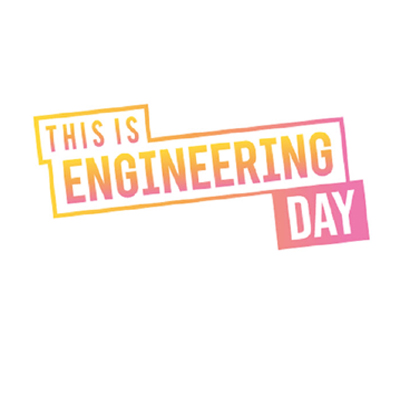“Perceptions of engineering are changing”, says Professor Helen Atkinson, one of the figureheads for the Royal Academy of Engineering’s #ThisIsEngineering campaign. The technological revolution and the huge challenges facing society today mean that engineering is one of the most crucial, interesting and diverse careers. Professor Atkinson explains more, and shares her own journey into this field.
How did you get into engineering?
“I became an engineer by accident. I loved physics at school and went on to study the subject at university, despite my parents’ worries about what career that might lead me into. I loved asking questions and finding out how the world worked. Whilst at university I discovered Metallurgy and Material Engineering, and it was a fascinating subject.
“You look down a microscope and see these amazing shapes and colours – and they all mean something. It is aesthetically stunning. The strength of a metal is determined by the shape of the crystals and how they fit together, and how the metal structure behaves when it is stressed is all determined by this fundamental microstructure. I found that fascinating, so I shifted from Physics to Metallurgy and Materials, which was an engineering field.
“Whilst at university I was given a Caroline Haslett scholarship which made a real difference to me. Caroline Haslett, born in 1895, was an electrical engineer and inspirational champion of women’s rights.”
Is the UK still facing a skills gap in engineering?
“Engineering is crucial to our economy and quality of life. Yet we don’t have enough people coming through into engineering at all levels.
“It isn’t just about graduate engineers going into company schemes, we need young people to consider all levels and the diverse fields of engineering – whether that’s an apprenticeship, a technician qualification, degree or postgraduate route. The wonderful thing about engineering is the diversity of roles and variety of ways you can get into a career in this field. It is so broad, and there are so many facets to it.”
How can engineering change its image from a white male in a hard hat?
“Many of the images of the profession we are currently presented with are white men in hard hats (go and search for ‘engineer’ in Google Images!). We need engineering companies to help us change perceptions, by using images that show the diversity of this field. Stock image providers, recruiters, advertisers and the media have a role to play here too, by offering a wider range of pictures that illustrate engineering.
“Engineering is actually very creative and people oriented, but we don’t see images that reflect this. It’s important we change this perception in young people but also in their parents, teachers, carers and careers advisors.”
As part of This is Engineering Day, over 100 brands that depend on engineering, including the BBC, Facebook, ITV, Ocade, Rolls-Royce and National Grid, have pledged to increase the visibility of more representative images of engineers and engineering. They have helped create a new library of free images of engineers, such as this engineering technician below, to better represent what the sector and the the people working in it look like: www.flickr.com/thisisengineering/
What would you say to a someone interested in a career in engineering?
“Engineering takes science and makes it a reality.
“It really is an exciting and flexible career that can change the world. Engineering enables transport, communication, power generation, energy security, combating climate change through technology and medical care. It gives you your smartphone, the internet and products you use every single day.
“A great resource to find out more about engineering career paths is Tomorrow’s Engineers, and you can watch some short videos for inspiration from #ThisIsEngineering on YouTube.”
Which engineers are inspiring people today?
“Tim Peake is one of the most well-known engineers in the public eye today, he shows the joy that comes from feats of engineering. James Dyson illustrates the design side of engineering very well. And then there is Roma Agrawal, a structural engineer known for her work on The Shard in London.
“Naomi Climer, a broadcast engineer who was the first female President of the Institution of Engineering and Technology, is an inspirational person championing the future of the sector.
“The first woman President of the Royal Academy of Engineering, Ann Dowling, is a mechanical engineer best known for her work reducing aircraft noise.
“Everywhere around us, there are exciting and dynamic engineering role models.”
What are some of the exciting engineering developments going on at Cranfield University?
“Cranfield University has a lot of engineers, it’s fundamental to what we do at this unique university. We have a huge interest in developing the widest possible field of people into engineering, and helping them realise what a broad and multi-dimensional career it can be.
“Some of the most exciting projects we’re working on at Cranfield University include:
- The development of digital aviation, examining how airports will change, how we can share air space with drones in a controlled safe way, and digital air traffic management.
- A campus wide sensor network, part of the Urban Observatory
- The work we are doing on developing autonomous driving and integrating it with human drivers
- The Nanomembrane Toilet, which has a waterless flush, named as one of the ‘50 ideas to change the world’ by the Financial Times
- Our work in Digital Forensics is fascinating and increasingly important
“We’ve also had a number of women engineers named in the Top 50 Women in Engineering, including Professor Emma Sparks, Head of the Centre for Systems Engineering and Simone Weber , Technical Project Manager at Airbus Helicopters UK and Researcher at Cranfield.”
Find out more from our student engineer blogs
Many of our students blog about their experiences studying at Cranfield. Read some of their accounts on our blog site.
About Professor Helen Atkinson
Read more about Professor Helen Atkinson's background.








